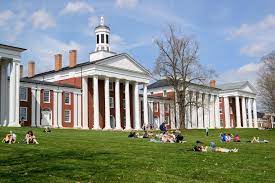
The Rappahannock River. Photo credit: Va. Dept. of Conservation and Recreation
by Dick Hall-Sizemore
There are some issues that seem to be baked into public policy and, because they affect sensitive and important areas, tend to lead to controversies periodically.
Many years ago, one of the hottest controversies was the “inter-basin transfer of water.” Because Virginia is a “riparian rights” state, folks who live next to rivers can withdraw water from the river, but are not supposed to divert it to use by other people who do not live on the river. To do so would diminish the water available for those other riparian landowners. The Virginia Supreme Court in the 1942 case of Town of Purcellville v. Potts declared a per se prohibition against inter-basin transfer:
While a riparian owner is entitled to a reasonable use of the water, he has no right to divert it for use beyond his riparian land, and any such diversion and use is an infringement on the rights of the lower riparian proprietors who are thereby deprived of the flow. Such a diversion is an extraordinary and not a reasonable use.
The field of water law is a very complex one and that is as far as I am willing to dip my toe into it. Suffice it to say that inter-basin transfer of water is an important concept. For a more in-depth discussion, see here. Continue reading

 by Dick Hall-Sizemore
by Dick Hall-Sizemore by Dick Hall-Sizemore
by Dick Hall-Sizemore By Dick Hall-Sizemore
By Dick Hall-Sizemore




 by Dick Hall-Sizemore
by Dick Hall-Sizemore




 Kingsolver, Barbara. Demon Copperhead. Harper, 2022
Kingsolver, Barbara. Demon Copperhead. Harper, 2022
